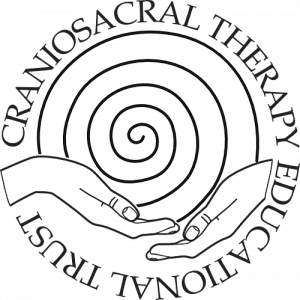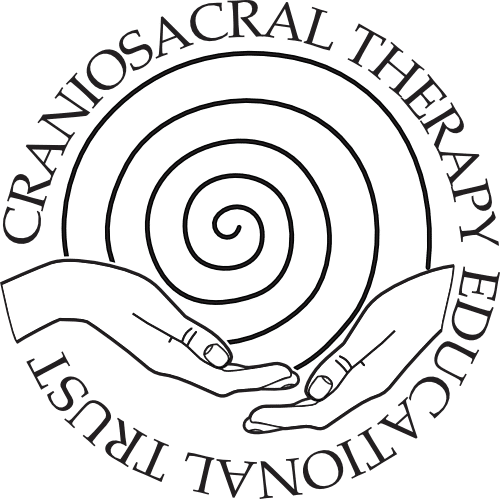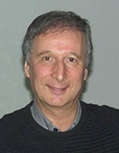Reading, Videos and Podcasts
Perfect Health and the Seeking Phase
by Michael Kern D.O., B.C.S.T., A.B.D., N.D.
Edited transcript of a talk given in Italy on 22/11/2006
One of the principles of biodynamic work is that there is a part of ourselves that is absolutely perfect, that doesn’t get diseased, tired, or stressed. It’s just absolutely right, absolutely perfect. If we can sense some of that underlying health within ourselves and our patients, and approach our treatments coming from that awareness, our work becomes very powerful. If we are stressed, tired or unwell but we know how to remember the health that is present, it also takes away any need to worry!
Does it ever fill you with wonder when you think about where healing comes from? How do our bodies know how to do the things they do? As many of us have witnessed in our practices, there’s a deep intelligence present in each of us that knows how to heal. We can think of this intelligence as a blueprint, which gets laid down right at the very start of life. Not only this but it seems that our bodies actually come into form in relation to this blueprint. So, a blueprint is already present even at a single cell stage right after conception, and it knows exactly how to create a whole human being. The implication here is that a whole human being is somehow already present, even before a body with arms and legs, etc. is there.
Dr. Jaap van der Wal, in his fascination with the developmental movements within the embryo, became interested in the forces at play during the early stages of our development1. He says that embryos don’t get developed in a linear fashion. It’s not that one structure forms and then out of that something else forms and then something else, in a linear system of development. Through his observations of thousands of embryos he describes that our embryological development is more like a cascade into a wholeness that is already present. There is never a time that we are not whole, and our embryological development is simply a cascading into this wholeness that is already there. The intelligence we’re talking about not only creates us, but also maintains us as we are actually being created every moment. We are in a constant process of cascading into wholeness. It’s not like, “OK, now my body has been built, and that’s it!” The body is constantly getting built and regenerated. This is nowhere near being a random process; it’s being guided. There has to be some kind of intelligence behind this process otherwise it would be completely chaotic.
As I mentioned, one of the key principles in biodynamic practice is that a deep intelligence plays through us that knows exactly what to do. This intelligence is also something that we can listen and orient to in order to support its expression. In this listening part of the deal for us as practitioners is to get out of the way, so that we truly can listen. I’d like to emphasise that “getting out of way” doesn’t mean going absent, but allowing another kind of intelligence, which we can call an instinctual awareness, to be able to show us what’s going on. It means not using the particular faculties that we perhaps learned in school, to evaluate and diagnose what needs to be done. In other words, what I’m saying here is that we don’t use an intellectual process to evaluate our patients and decide where and how we need to be working, but a different faculty and a different kind of perceptual awareness.
Talking about this I’m aware of many different areas of potential misunderstanding. It doesn’t mean that you can’t think, or that you can’t consider things, or that you have to become some kind of vegetable! Actually, it requires an even deeper kind of presence; a real openness. I don’t think that we can be open if we’re not present. I tried for years and was quite unsuccessful! So, we’re looking to find a real sense of openness. You might ask, “Open to what?” Good question, and we’ll come onto that shortly. What I’m referring to right now requires a level of trust that allows us to get out of the way with our intellects and with our need to do and control something. This can be like stepping off a cliff and jumping into the abyss. Is there going to be anything else if I do that? What if there’s just a void? So, there’s got to be a certain level of trust, but this is not a belief, like a religious or a spiritual belief. Maybe belief will come later, but it needs to be based on experience and not because someone told you that it’s this way or that way. It requires trust.
I don’t think that there’s a short cut to develop this trust other than repeatedly putting yourself in situations in which each time you’re willing to let go a little more and open yourself a little more, and then to see what happens. I really don’t think that there’s any quicker way of doing this. After a while, you just start to develop more and more trust that the more you do this, the more the intelligence of life is going to take care of the situation. It is a kind of surrender, and it may be that at some stage in our evolution this is what we all have to learn. So let’s put our hands up and say, “OK, I surrender. I really don’t have a clue about what to do right now”. Then, another part of yourself may say, “Oh, perhaps I’ll try this technique, or that technique”. Perhaps your kinesiology teacher told you that you could try that muscle test, or your reflexology teacher told you that you could work on that particular reflex point, or your osteopathic teacher told you that you could do that stretch or that adjustment. And so a dance begins between our intellectual rational minds and our deep instinctual awareness. It actually requires quite a lot of bravery to really surrender. Sometimes we hold onto the idea that surrendering is just for cowards, but in this context it actually requires a lot of bravery to be open to admit that there’s something that knows how to do all of this that is far more intelligent than we are. This is really the way to listen to the inherent treatment plan2. If we get out of the way, if we listen, there is an intelligence that will teach us what to do. Another observation is that we can’t really listen unless we have stillness. Do you agree with that? If our minds are really busy and active we lose the ability to just listen. There’s a direct relationship between listening and stillness. Stillness is the ground from which we can begin to listen.
It’s important to understand that when we put our hands on a patient the priorities of treatment are not necessarily the first things to show themselves in the patient’s physiology. So we can start to orient to what we call the “wholistic shift”, which is a sense of physiological and psychological settling and unifying within the patient’s system (which doesn’t always happen)3. Dr. Becker beautifully described the wholistic shift as occurring when the will of the patient lets go into the will of primary respiration. But before we can expect a patient to let go of his or her will and surrender to the forces of primary respiration, we have to let go of ours.
From this state of settling into the wholistic shift we can start to listen for a movement within the patient’s physiology; a movement of potency to a place that is ready to be worked with. It’s as if there’s a particular strain or pattern or fulcrum that starts to say, “OK, I’m ready. This one. Over here! This is what needs working with right now.” What’s guiding this process? It’s the intelligent forces of health being expressed within the patient. You may sense that the whole field of tissues, fluids and potency starts to fulcrum around a particular place. At that particular time and place the potency of the Breath of Life intelligently orients to that pattern or strain. That’s the one that comes up to the surface and says, “This is what’s important right now, this is what’s ready to be dealt with”. This is all part of the “seeking phase”; the first stage of the treatment process.
You may notice a movement of potency to a certain place, like a bubbling up of resources or subtle activity moving to that area, distinguishing it as a place where a therapeutic process is starting to occur4. When you’re oriented to tissues at the mid-tide level of perception, you may sense the fulcrum of this pattern as a place where there’s a loss of motility, that doesn’t breathe. If you’re more oriented to fluids you may notice lateral fluctuations of fluid moving around the fulcrum. You may also notice a densification of fluid at the fulcrum, or the fluids being locked up and not breathing. At the level of the forces or potency, you may sense a densification. As well as sensing textures, qualities and motions, you may get this in the form of images such as colour, light or dark expressed within the field. You can then form some kind of relationship with the area in question and start to orient to the latter stages of the “three-step healing process”: the settling phase, and the reorganisation phase5.
So, let’s now take a look at what’s driving the seeking phase. I’d say that it’s the intelligence that knows what needs to be done. It acts as a pull. Nature is constantly creating a kind of tension, a pull to take us back to our origins. This is what Dr. Becker was referring to when he spoke about the “bioenergy of wellness”, which he called the most powerful force in the universe. We are all constantly seeking health. This seeking significantly includes the body, which is always trying to find the best possible health that it can. I remember listening to The Dalai Lama saying that basically all creatures, all sentient beings are constantly seeking happiness. This is something that we all have in common. For example, why are the ants crawling on the floor looking for food? It’s because they need to be happy. Why do I jump on an aeroplane and come over here to teach another seminar? It’s because I’m looking for happiness. Why have you all taken time off from your busy schedules this week to come here and sit and listen to this?
If we really pay attention, we’ll see that this seeking is always there. Sometimes it can become painfully present, like a fire that burns through us. Years ago when I started looking at the Sufi teachings, I discovered the practice of deeply listening with the heart and of yearning. If we stop and listen, perhaps we will start to feel this yearning. Check it out for yourselves. Is it there? If there’s a yearning, there’s got to be a yearning for something. If there was nothing beyond the yearning, there would be no yearning! So what are we yearning for? Maybe lunch! Perhaps this will satisfy a short term need, but beyond these types of needs we’re always seeking something. If we recognise our yearning, in mind, body and spirit, even celebrate it as being an intelligent natural movement, it can become the beginning of a journey that leads us to a more wholesome involvement with all life.
What I’m leading to here is: forget about all your techniques and realise that within each one of us there is already a natural tendency, a natural movement that is seeking health and happiness. So the seeking phase is always there; it’s infallible. Perhaps, I’ve been getting a bit mystical this morning (which is probably one of the beauties of tiredness!), but this is important to understand so that we can find a context for what we’re doing.
Let’s come back to the question of what we’re seeking. Remember that if there wasn’t a place within us that was already perfect and whole then I don’t think there would be any seeking or yearning. So, by definition, I’m saying that there has to be something intelligent and perfect within us. There has to be. Otherwise, this wouldn’t be our experience. In the practice of biodynamic craniosacral work this intelligence and perfection is what we’re creating space for. We’re listening to and acknowledging the seeking that is present; the yearning of our patients’ physiologies to access the greatest possible balance and health. The fact that this state of health is always present creates the draw; this is the pull that will take us back to our origins. This is what creates the seeking. This ties in with many spiritual teachings. In fact, all the spiritual teachings that I’ve come across say that at some level we’ve become separated or fragmented from our wholeness, our divinity or our creator. Our path and our journey is to find our way back to the home from which we’ve become separated. We’ve been cast out of the Garden of Eden and are walking around in the wilderness trying to find our way back home. I think we’re referring to the same basic truths in craniosacral work, and the seeking phase is the first step in finding a more profound relationship to these origins of health and our deeper nature.
© Michael Kern, 2007
References:
- For further information about Dr. van der Wal’s work go to www.embryo.nl.
- The inherent treatment plan refers to the natural priorities of treatment which are being guided by the intelligent forces of order and balance within the patient. This is actually the most efficient way that the body can heal.
- The wholistic shift is sometimes referred as the “patient’s neutral” in other texts.
- Different perceptions of this process may occur according to which aspects of the primary respiratory system are being tuned into.
- The “three-step healing process” refers to the basic phases of treatment as described by Dr. Rollin Becker. For further details refer to “Wisdom in the Body” by Michael Kern, page 163.


